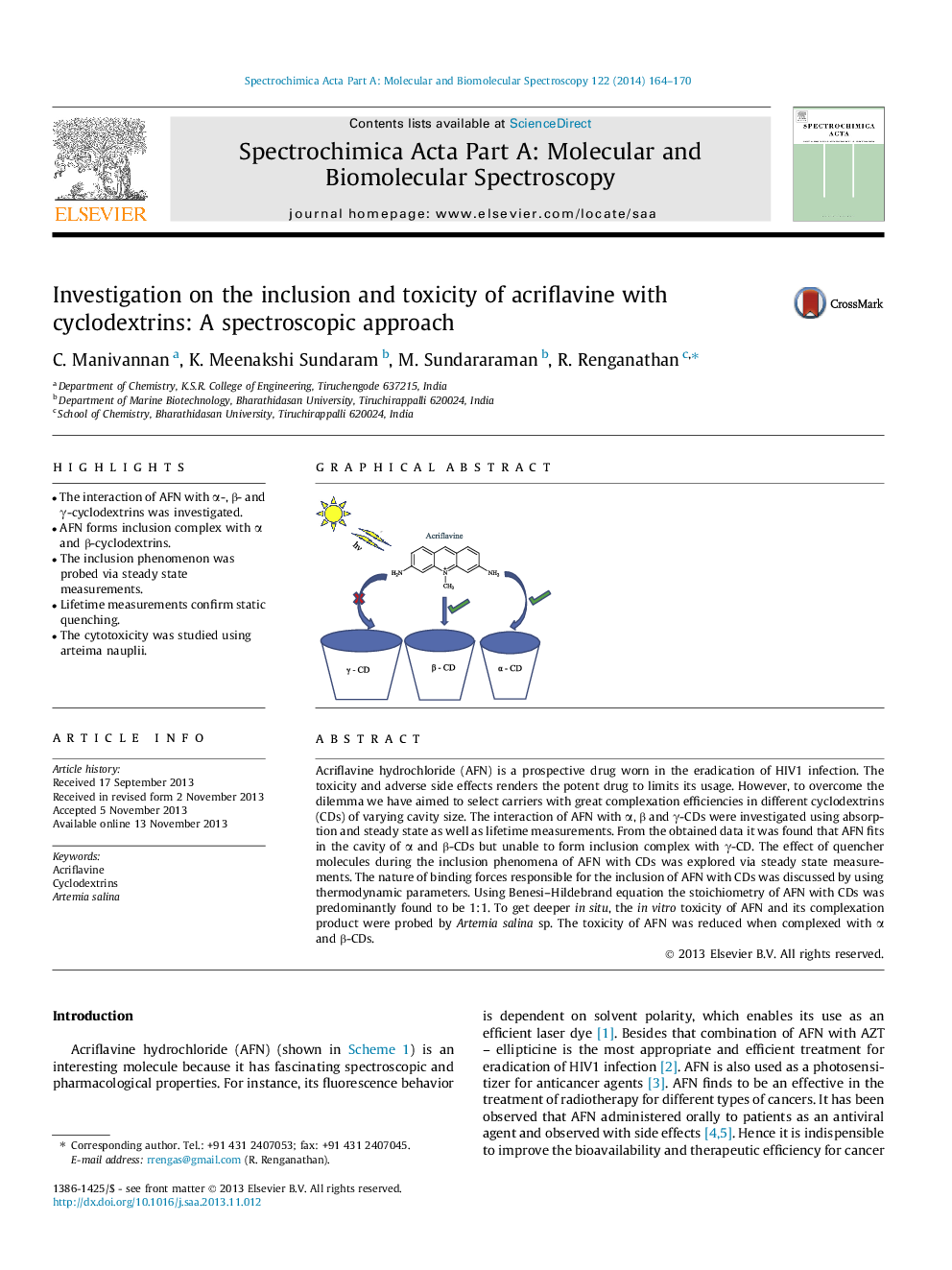| Article ID | Journal | Published Year | Pages | File Type |
|---|---|---|---|---|
| 1230230 | Spectrochimica Acta Part A: Molecular and Biomolecular Spectroscopy | 2014 | 7 Pages |
•The interaction of AFN with α-, β- and γ-cyclodextrins was investigated.•AFN forms inclusion complex with α and β-cyclodextrins.•The inclusion phenomenon was probed via steady state measurements.•Lifetime measurements confirm static quenching.•The cytotoxicity was studied using arteima nauplii.
Acriflavine hydrochloride (AFN) is a prospective drug worn in the eradication of HIV1 infection. The toxicity and adverse side effects renders the potent drug to limits its usage. However, to overcome the dilemma we have aimed to select carriers with great complexation efficiencies in different cyclodextrins (CDs) of varying cavity size. The interaction of AFN with α, β and γ-CDs were investigated using absorption and steady state as well as lifetime measurements. From the obtained data it was found that AFN fits in the cavity of α and β-CDs but unable to form inclusion complex with γ-CD. The effect of quencher molecules during the inclusion phenomena of AFN with CDs was explored via steady state measurements. The nature of binding forces responsible for the inclusion of AFN with CDs was discussed by using thermodynamic parameters. Using Benesi–Hildebrand equation the stoichiometry of AFN with CDs was predominantly found to be 1:1. To get deeper in situ, the in vitro toxicity of AFN and its complexation product were probed by Artemia salina sp. The toxicity of AFN was reduced when complexed with α and β-CDs.
Graphical abstractFigure optionsDownload full-size imageDownload as PowerPoint slide
